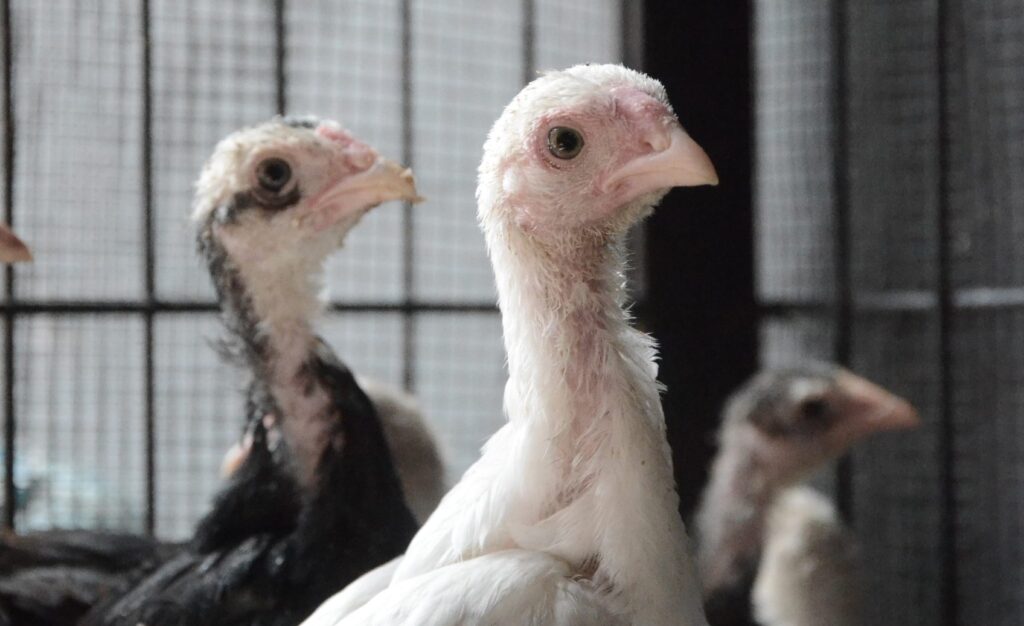
We hope everyone is blessed to have even a small family meal together this Thanksgiving, despite the pandemic. If so, here are some things to keep in mind:
- Annual U.S. total turkey production: 244.8 million birds (USDA, 2018). 46 million of these are slaughtered each year in the United States for Thanksgiving alone. (Farm Sanctuary)
- Industrial turkeys on factory farms are created by artificial insemination. A few days after hatching, turkeys have their upper beaks snipped off. They usually live in a large window-less room with thousands of other turkeys, so typically have less than 3 sq ft of living space.
- In their natural environment, turkeys are social and are omnivores. But in a factory farm, turkeys are fed a diet of corn-based grain feed laced with antibiotics, to inhibit the spread of disease.
- Resistance to antibiotics is now a growing concern among many in the medical field and it is largely due to the 29 million pounds administered to factory-raised animals every year. (CivilEats.com)
- They are bred with hormones to be top heavy, so can barely walk by the time they are slaughtered, and are often killed within their first six months of life. As poultry is exempt from the federal Humane Methods of Slaughter Act, the live birds are shackled upside down on a conveyor belt, paralyzed by electrified water and then dragged over mechanical throat-cutting blades. (latimes.com, “Grim realities behind Americans’ traditional Thanksgiving meal”, 2017)
- Some factory turkey farms collect animal waste in open-air lagoons that can contaminate nearby water supplies. The gallons of water used to produce a pound of turkey at a factory farm equals the same amount of water the average American uses in 100 showers. (localrootsnyc.com)
The Humane Society and others are working with large corporations to commit to policies to improve these conditions. But we can each make choices to preclude this suffering. Many high protein plant based meat substitutes are available in the market today. Choosing organic and local also helps make your meal sustainable.


Thank you for the good information about the deplorable conditions on factory farms, inhumane treatment, and pollution. I read that as of 1/1/2017 the USDA banned antibiotics in animal agriculture for non-medical use because it was threatening the use of antibiotics by creating superbugs. I didn’t think they were using hormones anymore either. Poultry have large breasts because they’re bred that way. And they grow really fast, too, without hormones or antibiotics because of cross-breeding over the years. It’s still really sickening!! If most people saw the inside of the warehouses they would probably stop eating meat!! Although some people just don’t want to know!!